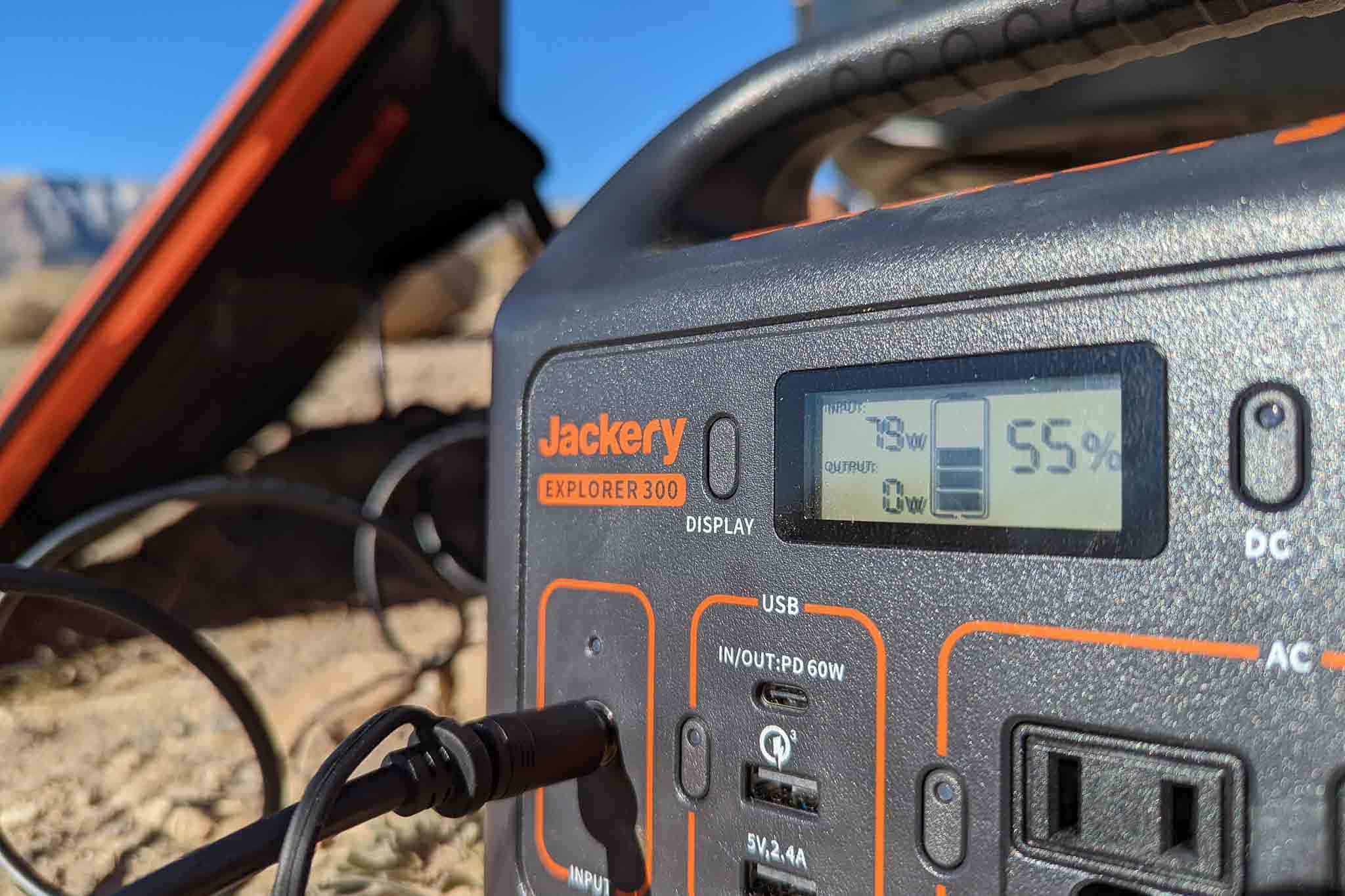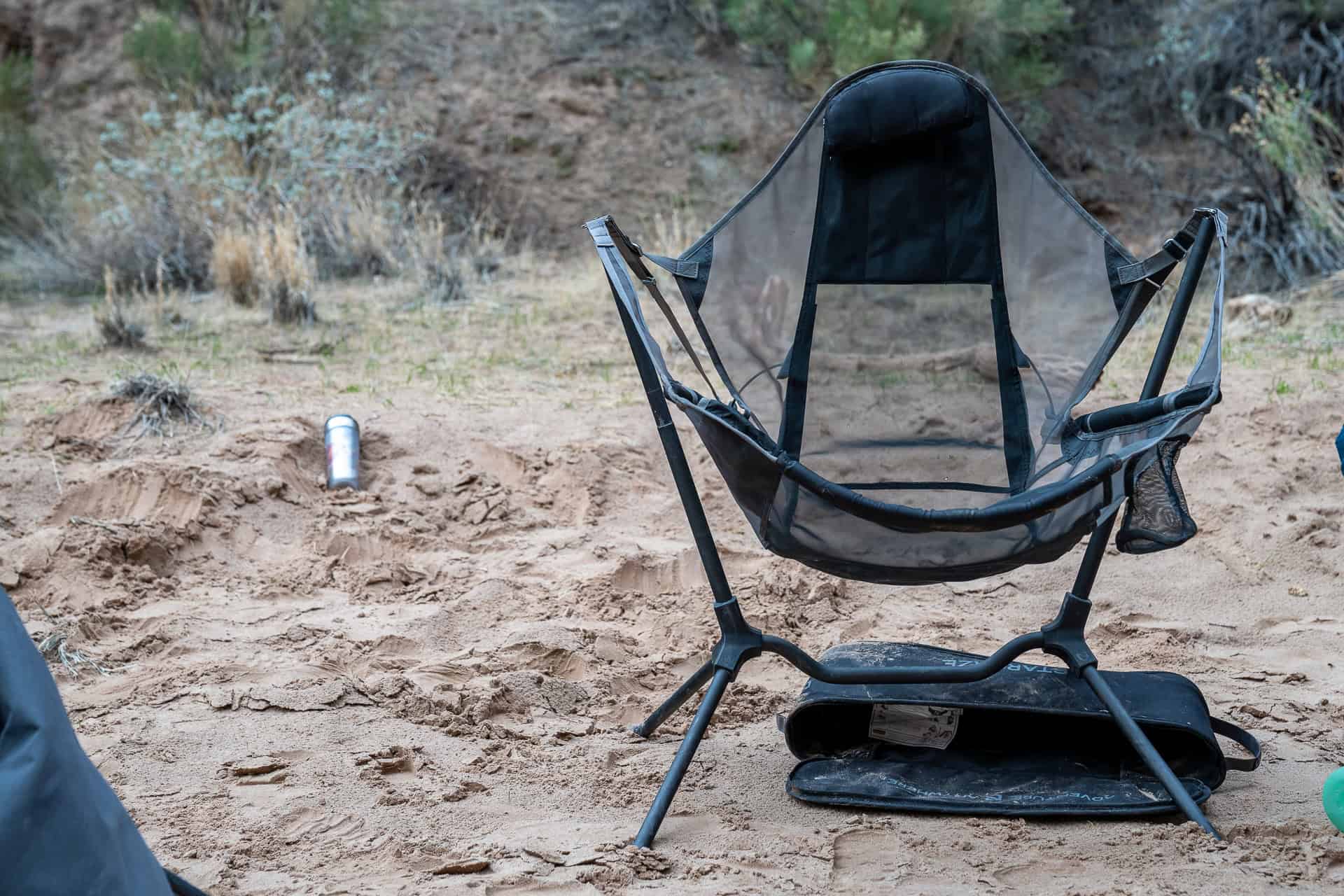Jackery Solar Generator 1000 Review
The Jackery Solar Generator 1000 is a combination package of the Jackery Explorer 1000 and two SolarSaga 100W Solar Panels. The Jackery Explorer 1000 is a 1002Wh power bank weighing 22.04 lb / 10 kg with two USB-C ports, two USB-A ports, three Type B outlets, and a 12V car port.
It boasts enough capacity to reliably power large devices like laptops, powered coolers, televisions, or drones. It is large enough to provide power for an extended off-grid expedition – especially if you’re using it with a solar panel (or panels). It’s designed to be portable, easily rechargeable, and practical.
Here’s everything you need to know about the Jackery Solar Generator 1000.
Testing Conditions
I have used the Jackery Solar Generator 1000 while traveling around the southwest United States in my car which served as my basecamp. It was my sole source of power for charging all my devices for use both on the trail and in my car. I charged the Jackery Explorer 1000 with both the SolarSaga 100W solar panel and via my car.
Pros and Cons

+ Lightweight and compact
+ Two USB-C ports with Quick Charge output
+ Two USB-A ports and three Type B outlets
+ Can be recharged via car, wall outlet, or solar
+ Two-year warranty
– No measure of the time remaining on the charge
– Pass-thru charging is not recommended
– Dim display screen
– No discount for buying bundled items
The Specs
The following information reflects the Jackery 1000 only. The SolarSaga 100W specs can be found here.
- Weight: 22.04 lb / 10 kg
- Dimensions (in): 13.1 x 9.2 x 11.1
- Dimensions (cm): 33.3 x 23.3 x 28.3
- USB-C Ports: 2
- USB-A Ports: 2
- Type B Outlets: 3
- Operating Usage Temperature: 14-104°F (-10-40°C)
- Capacity: 1002Wh (21.6V, 46.4Ah)
- Cell Chemistry: Li-ion NMC
- Lifecycle: 500 cycles to 80%+ capacity
- AC Output: 110VAC, 60Hz, 1000W (2000W Surge)
- USB-A Output: 5V, 2.4A
- Quick Charge 3.0 Output: 5-6.5V, 3A / 6.5-9V, 3A / 9-12V, 1.5A
- USB-C PD Output: 5V, 9V, 12V up to 3A
- Car Output: 12V, 10A
- DC Input: 12V-30V (163W Max)
- Recharge via AC Adapter: 4.5 hours
- Recharge via 12V Car Adaptor: 14 hours
- Recharge via SolarSaga 100W: 8 hours
- Country of Origin: China
- MSRP: $1,649 (Jackery Explorer 1000 alone, $1,099)
The Features
- No gasoline, fumes, or noise during operation
- Emissions-free energy source and reliable battery management system make it safe enough for indoor use
- Can be recharged within 8 hours with SolarSaga 100W solar panels.
- Two USB-C, two USB, one DC car port & three pure sine wave AC outlets

Photo Gallery










































The Good
The USB-C Ports: The Jackery Solar Generator 1000 has two USB-C ports. I wouldn’t consider a power bank without at least one USB-C port – more would be better. The USB-C port can be used as either an input (to charge the Jackery Explorer 1000) or as an output (to charge a device). It’s more than capable of powering USB-C devices – even laptops and tablets.
The Solar Charging: The SolorSaga 100W solar panels do an excellent job of charging the Jackery Explorer 1000 – provided you have it out in direct sunlight. Hooking them up is simple and if you have sunlight available the most difficult part will be finding space to set each of the panels up. Charging the Jackery Explorer 1000 from zero to 100% in direct sunlight takes approximately 8 hours. The solar panels are compatible with other Jackery units, as well.
The Operating Temperatures: One thing I worry about when traveling in and living out of my car is the temperatures my car (and therefore my gear) will experience. I often find myself in areas where temperatures are either exceeding 100°F / 38°C or dropping below freezing. Fortunately, the operating temperature range of the Jackery Explorer 1000 is 14-104°F (-10-40°C). I’ve yet to have a problem with it in either the heat or the cold.

The Okay
The Panel Size: The Jackery Solar Generator 1000 comes with two SolarSaga 100W solar panels which aren’t compact by any measure. The panels fold in half (with a handy magnetic closure) and measure 24 x 21 x 1.4 in (610 x 535 x 35 mm) folded or 48 x 21 x 0.2 in (1220 x 535 x 5 mm) unfolded. They are thin and store nicely so long as you have somewhere flat to stick them. I’ve put them at the bottom of my roof box or between folded-down seats in the past. I’ve been pretty rough with them and they’ve held up surprisingly well.
The Time Remaining: A drawback of the Jackery Explorer 1000 is that despite having a battery percentage remaining on the unit, there’s no indication of time remaining until empty. This is to say, if you plug in your laptop to work, you’ll have to gauge the remaining time you have based on the time that elapses between checking to see what battery percentage is left.
The Buttons: To begin charging with the Jackery Explorer 1000 you need to hit a button adjacent to the plugs you will be using to turn them on. I usually find myself having to do this either in the dark or while blindly reaching into my car and finding the buttons a tad annoying. Perhaps if they had small lights (when off – they have lights when on) or were embossed or texturized to make them easier to find/push – maybe switches instead? I don’t know.
The Portability: The Jackery Solar Generator 1000 isn’t particularly light at 22.04 lb / 10 kg. The single handle across the top can make it a bit cumbersome to carry (as opposed to two handles on either side). Each of the SolarSaga 100 solar panels weighs in at 10.33 lb / 4.69 kg each. It is possible for a single person to carry the Explorer 1000 and two SolarSaga 100 panels alone, but they’re bulky at best.

The Bad
The Bundle: One thing that stands out to me about the Jackery Solar Generator 1000 is that despite buying what’s essentially a bundle of the Jackery Explorer 1000 and two SolarSaga 100 solar panels, there’s just a small price break – $50. It’s a lot of money to be investing in a system and a 3% discount for buying the Generator instead of the Explorer 1000 and two SolarSaga 100s separately isn’t much of an incentive.
Who is it for?
The Jackery Solar Generator 1000 is the ideal piece of gear if you want to keep your small, medium, or even large electronics charged while traveling or camping off the grid – so long as the large devices don’t need to be sun for too long. If you’re a small or medium-sized group (three to five people), the system should be able to provide you with all the power you need to keep your devices charged – particularly if you plan on taking full advantage of the solar panels.
If you’re looking for something to power a refrigerator, grill, or other large electronics, the system will work great so long as you’re not running things for hours at a time. For a system to power your devices 24 hours a day, you’ll want something more substantial. But even in this case, the Solar Generator 1000 is a great product to have as a backup.

Wrap Up
The Jackery Solar Generator 1000 has enough capacity to keep your large devices running longer, but comes at the cost of some weight and bulk. It’s certainly portable, but not necessarily something you’re going to want to be lugging around in your backpack.
That said, for a basecamp, car camping, or stationary outdoor adventures, the Jackery Solar Generator 1000 can do a solid job of powering your off-grid adventure – especially if you’ve got plenty of sunlight. Questions, comments, or personal experience with the Jackery Solar Generator 1000? Leave a comment below or get in touch and let me know!
Check out the Jackery Solar Generator 1000 here.
Affiliate Disclosure: This page may contain affiliate links, which means I may receive small commissions for purchases made via these links at no additional cost to you. This helps pay the bills and keep the site up and running. Thank you for your support!






